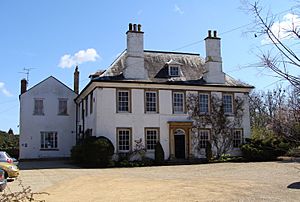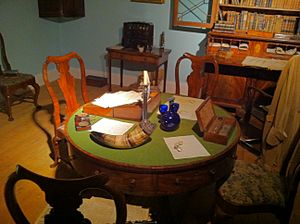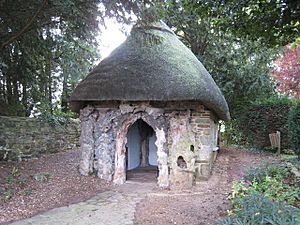Dr. Jenner's House facts for kids

The Chantry
|
|
| Lua error in Module:Location_map at line 420: attempt to index field 'wikibase' (a nil value). | |
| Location | Berkeley, England |
|---|---|
Dr. Jenner's House, also known as the Edward Jenner Museum, is in Berkeley, England. It's a special old building from the early 1700s called The Chantry. This house was once the home of Edward Jenner. He was a famous doctor and surgeon. Edward Jenner was a pioneer in creating the smallpox vaccine. Today, The Chantry is a museum where you can learn all about his important work.
Contents
The History of The Chantry House
How The Chantry Got Its Name
The Chantry house was built in the village of Berkeley in the early 1700s. It got its name because it was built on land that used to belong to a group of monks. This land was right next to the village church.
Edward Jenner's Home
Edward Jenner bought The Chantry in 1785. He moved there before he married Catherine Kingscote in 1788. Jenner planted ivy that grew up the church tower nearby. He also planted a grapevine in a special glasshouse attached to The Chantry.
The Temple of Vaccinia
Jenner had a small, rustic hut built at the bottom of his garden. He used this hut to treat poorer families in the area. Later, he started giving vaccinations there. He called this special hut "the Temple of Vaccinia."
The First Vaccinations
Edward Jenner was living at The Chantry when he performed the very first vaccinations. These important events happened in 1796 and 1798. His work showed how powerful vaccination could be in controlling smallpox. Even though Jenner lived in other places for a short time, The Chantry remained his main home until he passed away in 1823. In 1876, Jenner's family sold the house. The Church of England then used it as the local vicarage, which is a home for a priest.
About the Museum Today
Becoming a Museum
In 1985, the Edward Jenner Museum bought The Chantry. This museum is dedicated to Edward Jenner's work and the wider study of immunology, which is how our bodies fight off diseases. A Japanese businessman named Ryoichi Sasakawa gave a lot of money to help buy the house.
Restoring the Building
Over the next few years, the museum worked hard to restore The Chantry. They slowly opened more parts of the building to the public. Both The Chantry building and the "Temple of Vaccinia" in the garden are considered very important historical buildings.



